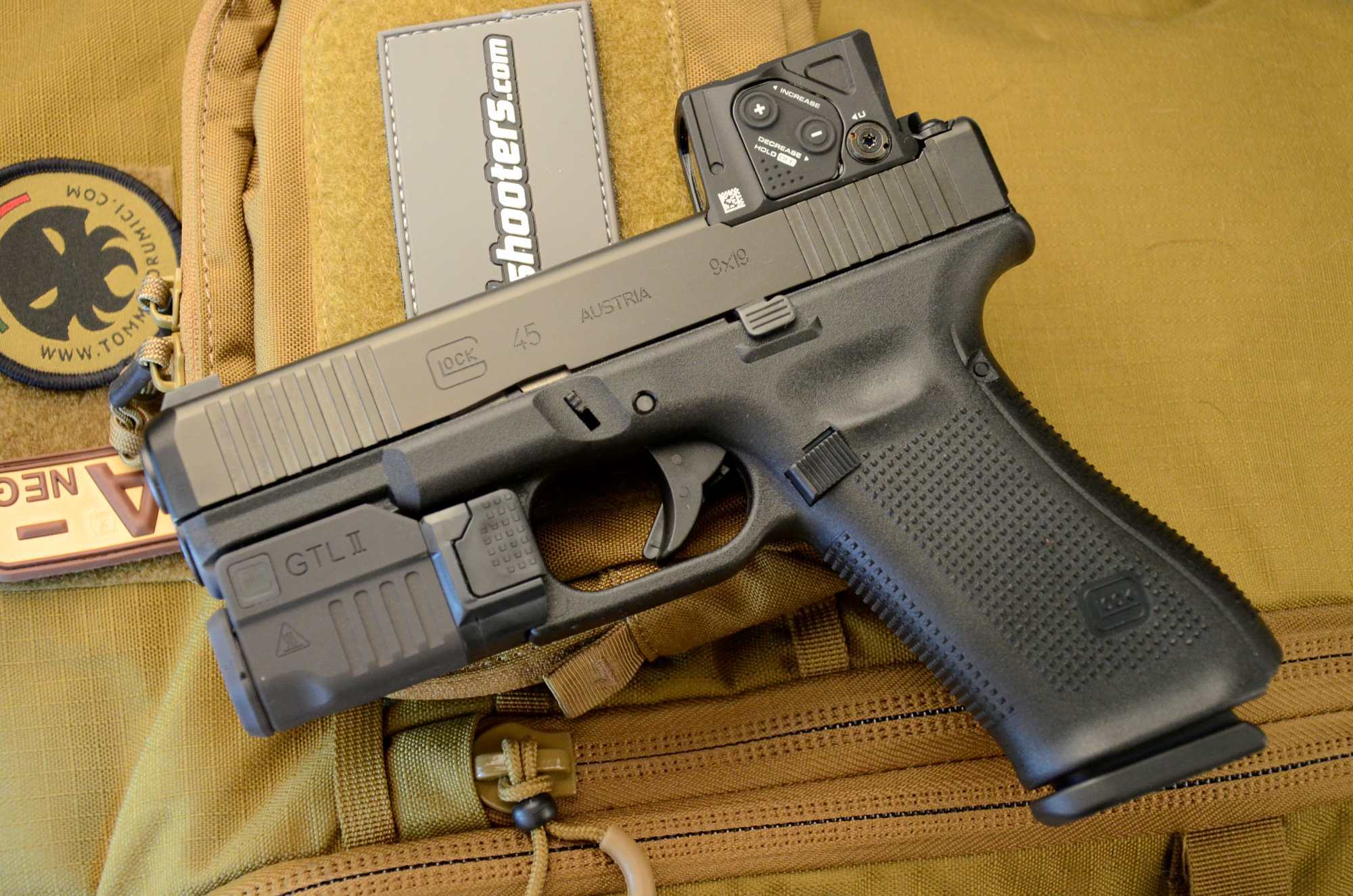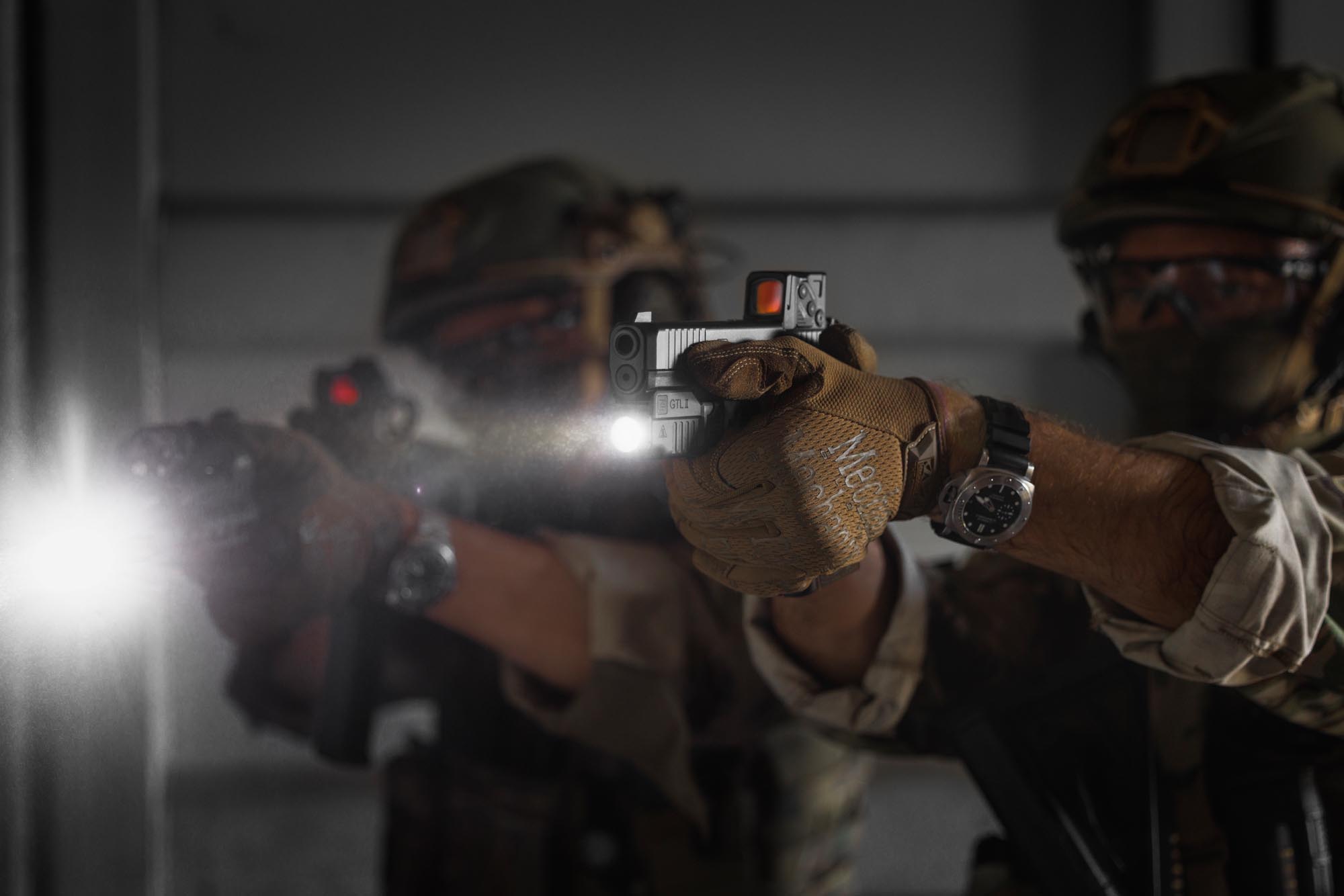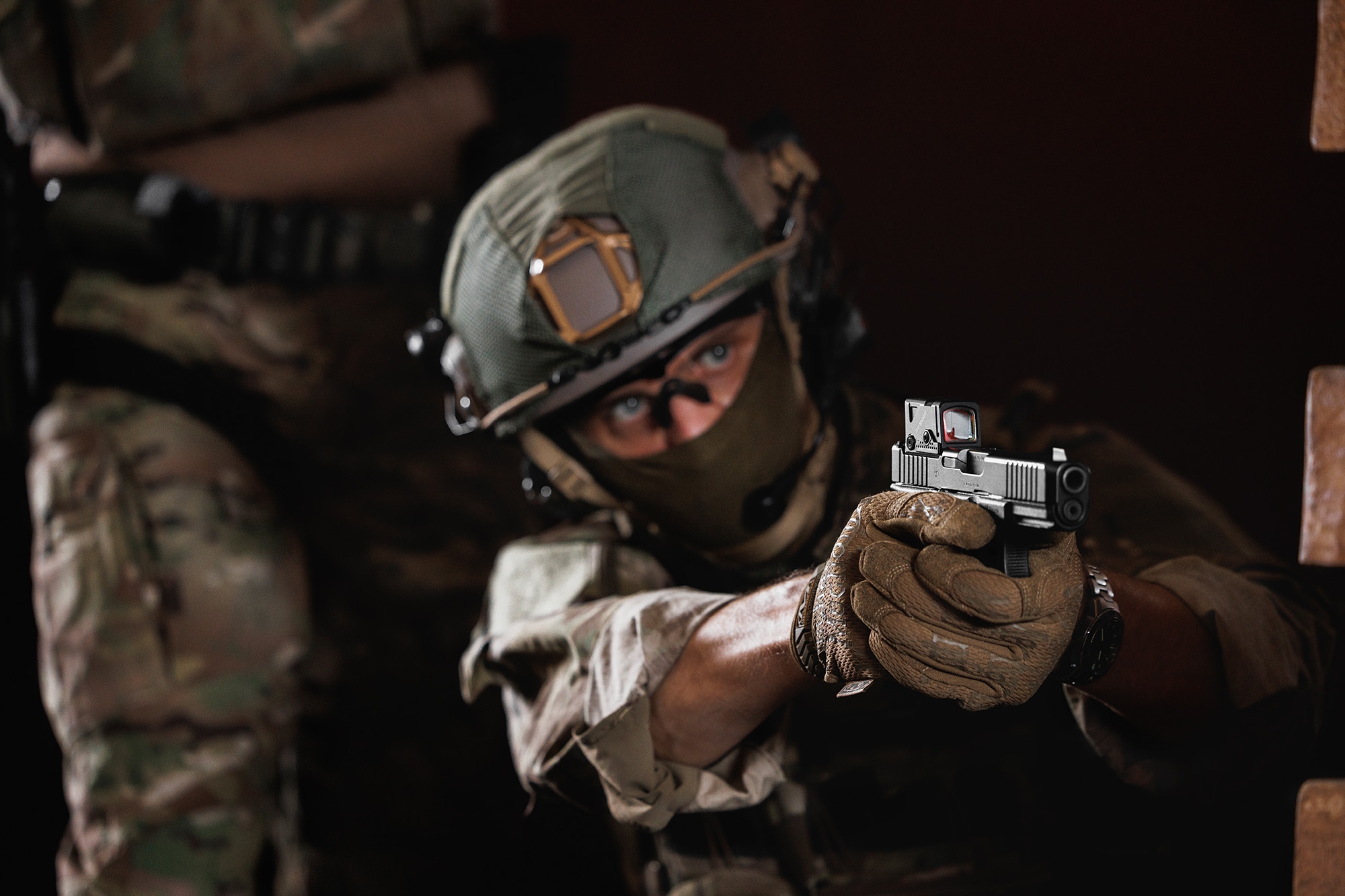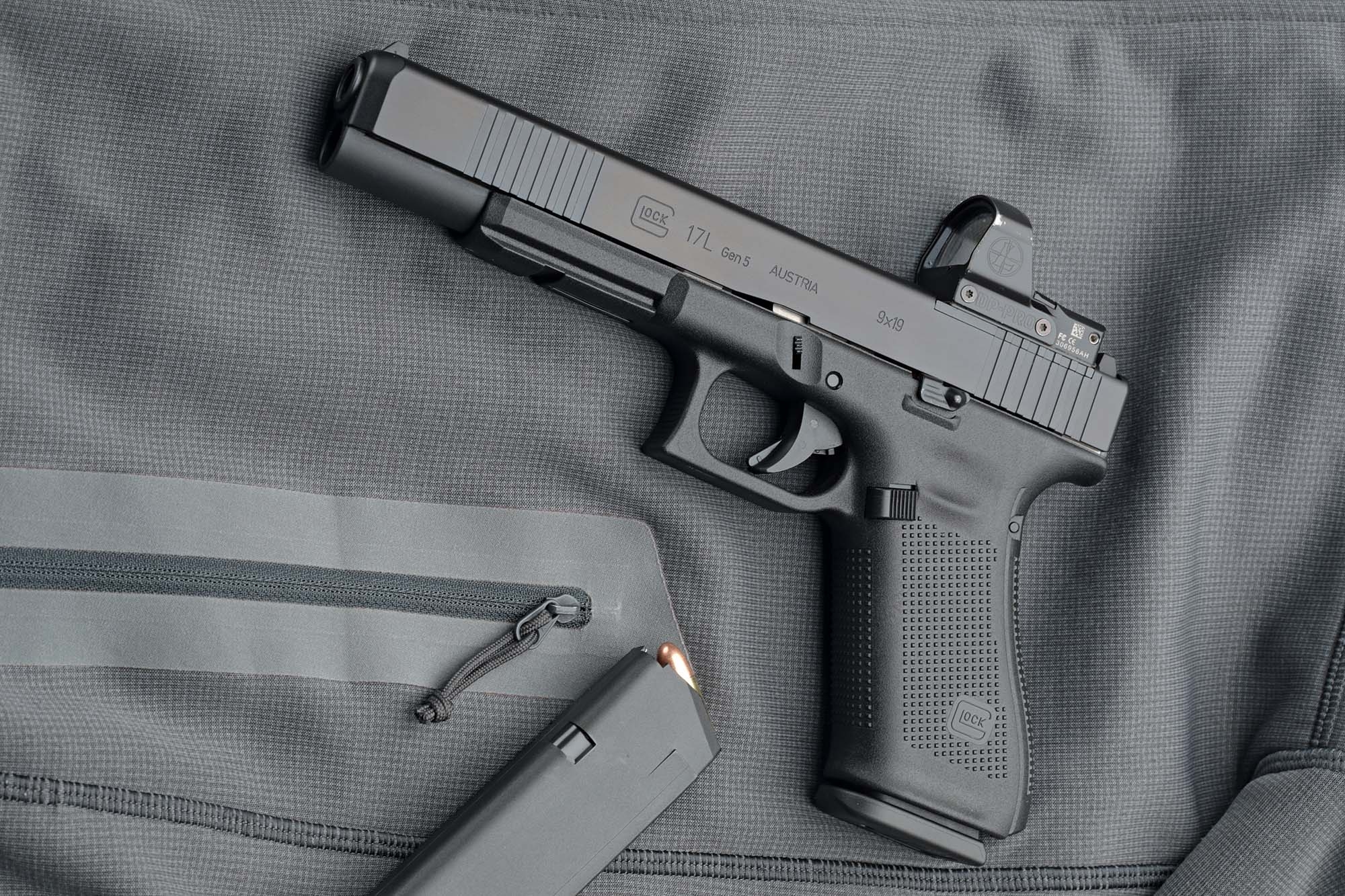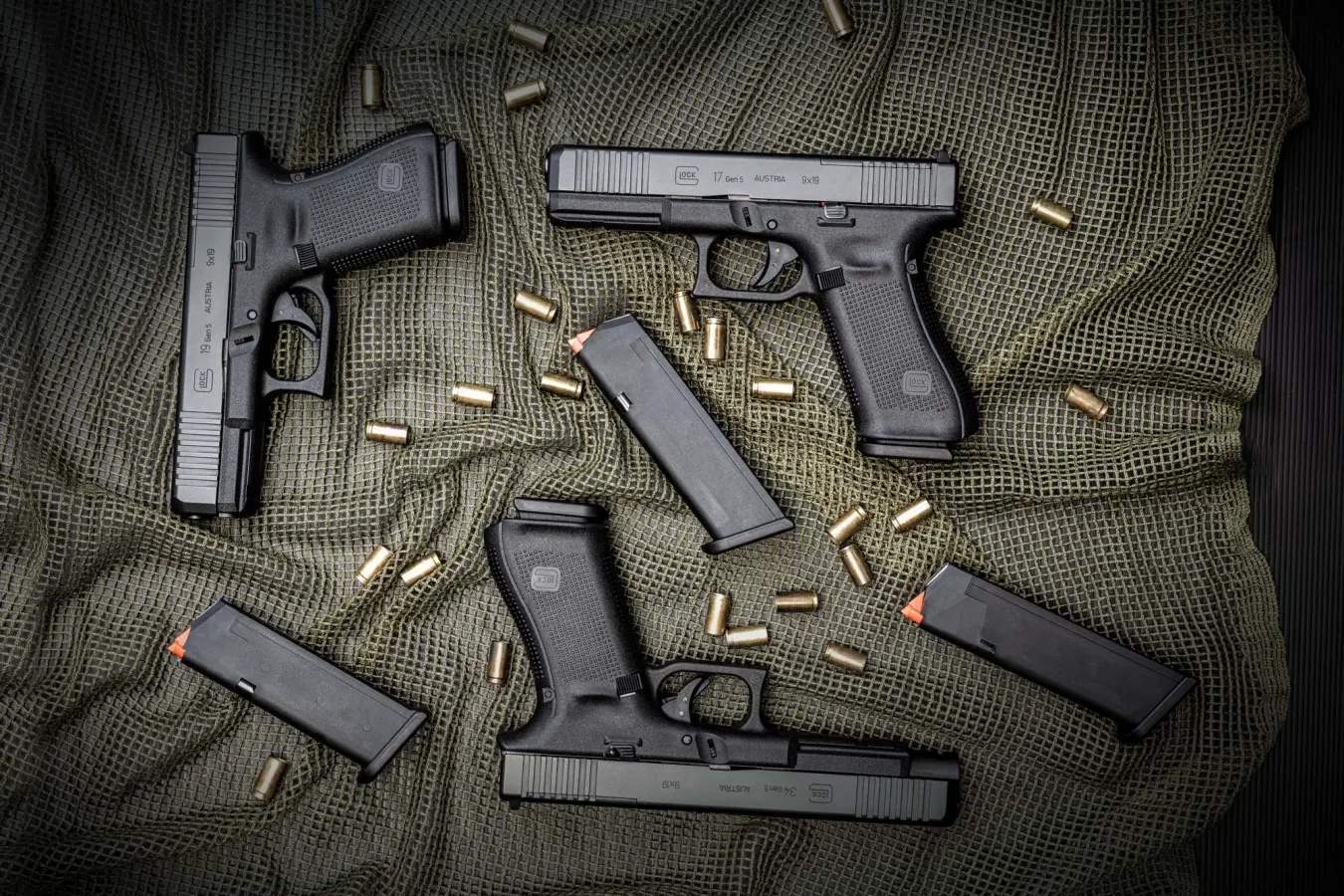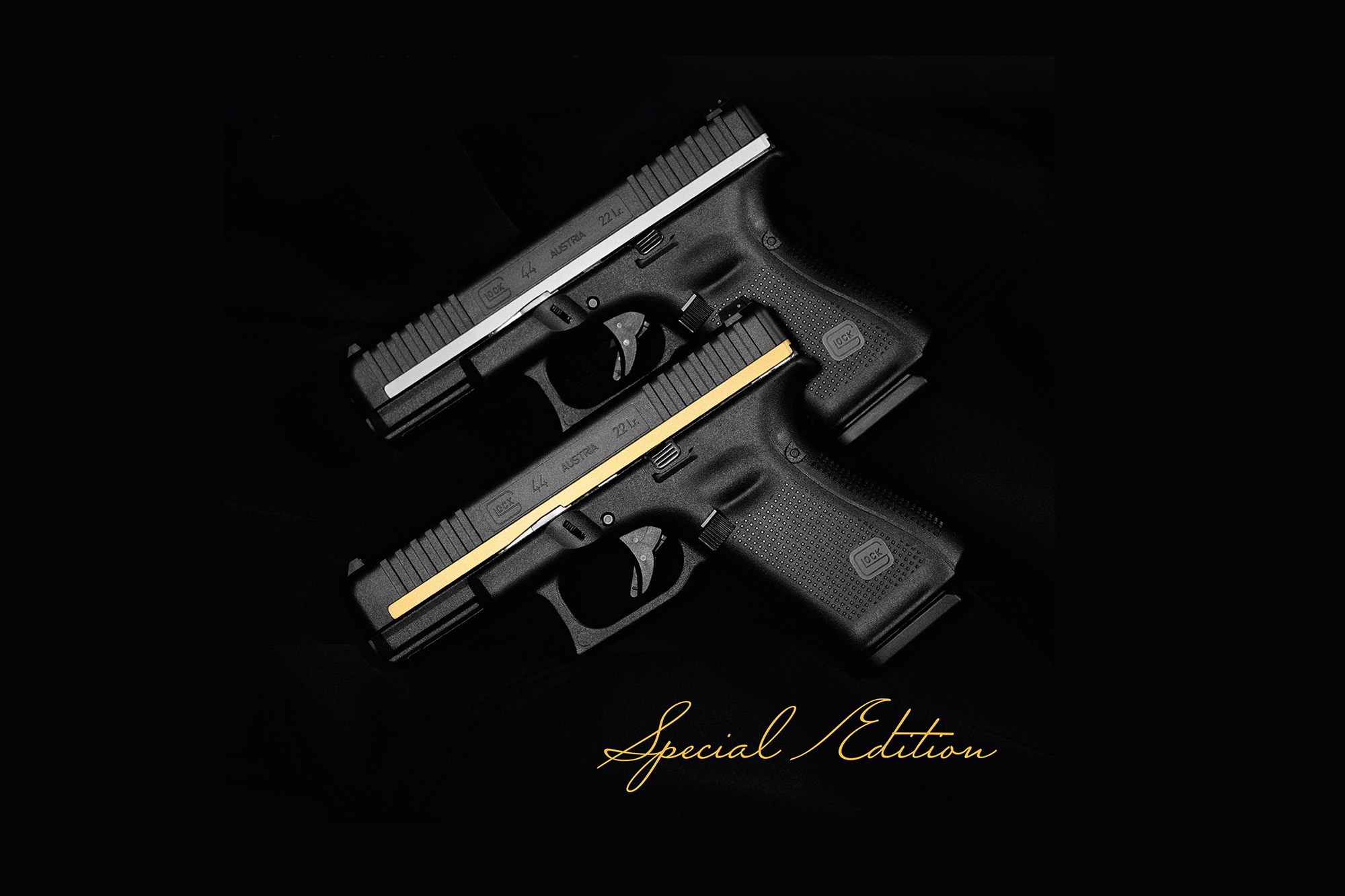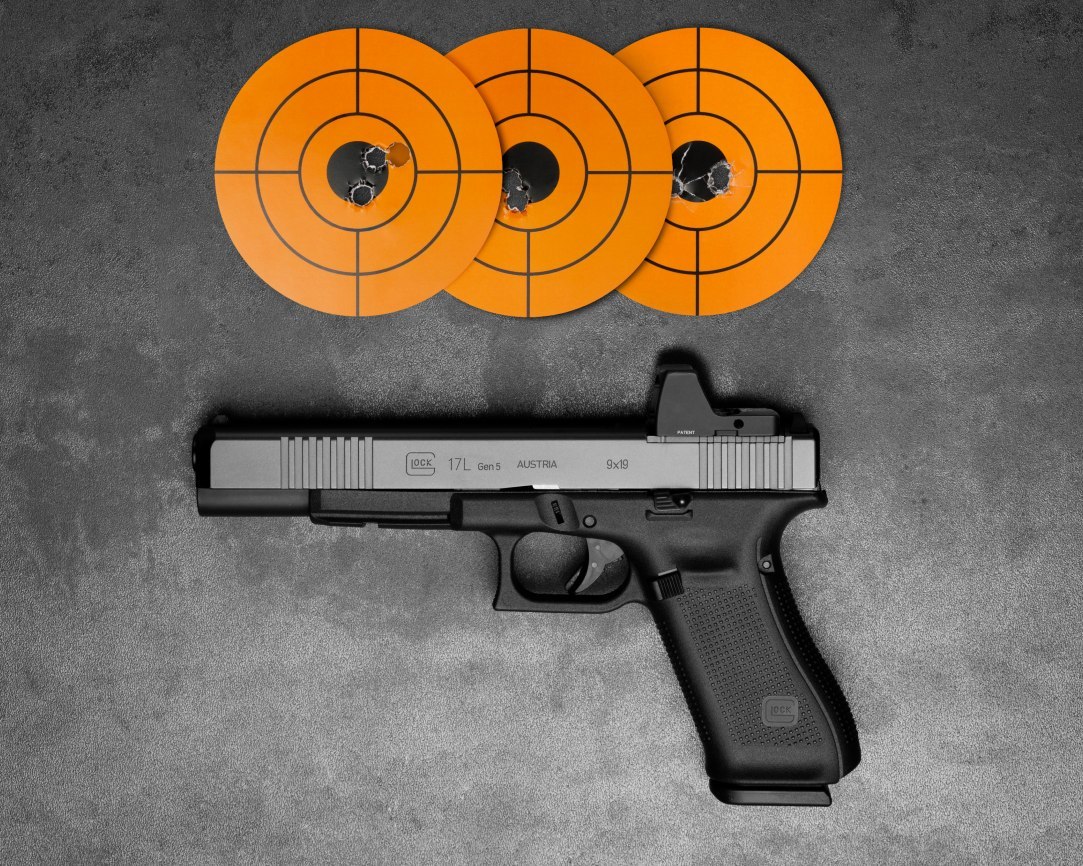Frame
Design changes have not passed the frame/grip by without a trace in the course of the five GLOCK manufacturing generations. This component, which is probably the most important for the shooter's ergonomics, has received the greatest attention from GLOCK in the last three model updates. With the change to the 3rd model generation, GLOCK introduced the grip grooves on the front strap and added the thumb recess on the upper side of the frame for the coming generations. The 4th generation then received – in addition to internal innovations such as a different recoil spring design – once again a new grip, which now came with two additional backstrap adapters.
These made it possible for the first time to adjust the grip size somewhat to the shooter's hand. Nevertheless, some shooters still complain about the grip width and opinions also differ on the grip angle. The same applies to the surface texture, by the way. The GLOCKs of the first two production generations came from the factory with only a slightly roughened texture. It was not until the 3rd generation that the gun received, in addition to the finger grooves, a more elaborate texture. Nevertheless, many shooters still consider the Rough Texture Frames (RTF), which were released in 2009, and the continuously developed surface texture (RTF2 and RTF3 patterns), as not grippy enough. This is probably also a reason why various shooters, especially from the dynamic disciplines, devote themselves to grip optimization in terms of surface texture.
To make the basic polymer frame of a GLOCK more grippy, three common modifications are found on the market: applying skateboard tape, laser engraving new textures, and the so-called stippling. The advantage of adhesive tape such as Decal Grip or simple rubber overlays from Hogue or Pachmayr is that these are not permanent changes to the grip – laser texturing or stippling sometimes involves working several millimeters deep into the material. Therefore, the prospective customer should inform himself in advance whether the intervention is also in accordance with the sports regulations. Stippling is one of the more common methods of making the grip even more grippy. This involves pressing the hot tip of a soldering/branding iron into the material of the grip where you want that particular texture. This typically results in a finely stippled area reminiscent of a moon crater landscape. The depth and texture of the stippling, meanwhile, depends on the shape and size of the soldering iron tip. Compared to the standard texture, stippling provides significantly more grip, although some comfort falls by the wayside.
The laser also digs into the material, but with the highest precision, as it usually involves a computer-controlled arm doing the job. Numerous US and European companies now offer laser engraving (also for slides, by the way) and/or stippling: ZEV Technologies, Shark Coast Tactical, Agency Arms, RBF International, Verex Tactical Tuning – to name a few. ZEV Technologies also offers, among other things, grip coating with silicon carbide. The result of this method can be imagined as a very grippy surface, reminiscent of skateboard tape. At the same time, this method has the advantage that it can be neatly applied to difficult areas such as the finger grooves due to the fine grain of the silicon carbide. This is because a 2-component adhesive is applied to the corresponding area of the grip, and the silicon carbide is then sprinkled onto these areas. Especially with laser and stippling, however, normal people should let pros do the job. The polymer grip, which is not particularly strong anyway, can – if worked too deeply into the material – break in the worst case even when firing. The newer GLOCK grips in particular have a much slimmer design. That's why tuners like RBF from Kronberg still rely on the stronger Gen3 grips when it comes to working directly into the grip material.
Weights, barrels, compensators & Co.
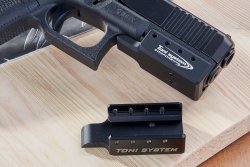
Attaching aftermarket metal components to the GLOCK, in addition to the benefits provided by the components themselves, can also help the GLOCK shoot noticeably smoother. This is especially true for high-weight additions such as jet funnels, C-More mounts, or frame weights. Toni System, for example, offers the latter in various materials and bright colors. The frame weight is simply pushed onto the tactical rail of the GLOCK and screwed tight. In addition to side mounting holes, the additional weights primarily provide recoil-reducing mass under the muzzle. Thus, shooters at Toni System can choose 40-gram aluminum frame weights, but also 130-gram brass weights for their GLOCK 17s.
Another way to add noticeable weight to the muzzle section is to install a compensator. There are heavy constructions that lend themselves to this area as well. Particularly in the US market and in the dynamic USPSA disciplines, many other popular options for adding additional weight to the frame include jet funnels. These come in a wide variety of shapes and materials. Although the lightweight polymer versions already help with magazine changes, they make the GLOCK only marginally heavier. The voluminous steel or brass jet funnels in particular add a lot of weight to the grip. Mounting is very simple: the funnel is attached by means of a pin and is also secured with a screw through the lanyard hole. Always keep in mind here that grip panels are designed to be much slimmer. That's why tuners like RBF from Kronberg still rely on the material-stronger Gen3 grips when it comes to working directly into the grip material.
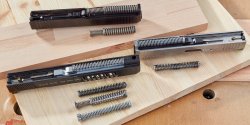
In the case of the recoil spring assembly an aftermarket upgrade can also be worthwhile. This is because the replacement spring guide rod is available in heavier materials (tungsten, steel, titanium) and you can choose a different spring stiffness. The latter makes sense especially if the shooter has a clear preference for a particular type of ammunition. For example, when using subsonic ammo, softer springs can usually be used without any problems. Those who like to shoot heavily loaded 95-grainers can reach for a stronger spring. But be careful, choosing other spring weights can result in numerous malfunctions: faulty trigger resets or failures to feed can be the result. GLOCKs up to the third generation came factory with a polymer spring guide rod, after which they switched to a captive assembly. Neither design proves to be particularly heavy. Here, too, the use of significantly heavier aftermarket guide rods can have a positive effect on the recoil behavior of the pistol.
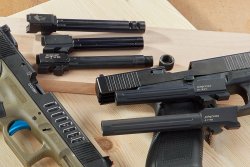
The same applies to aftermarket barrels: the so-called heavy barrels in particular push the nose down. The fact that reaching for tuning barrels immediately leads to improved accuracy remains a moot point. The barrels from the specialists (KKM Precision, Lone Wolf, Faxon...) show above all interesting additional features such as threads, ports, fluting or optical highlights through elaborate coatings. A significant improvement in the ergonomics of certain processes is provided by the numerous offerings of small parts. These include cover plates that serve as slide racks, tactical slide stops or enlarged metal takedown levers. The appearance of one's own gun can also be better individualized: just think of the numerous slide cover plates in colorful designs or with all kinds of graphic.
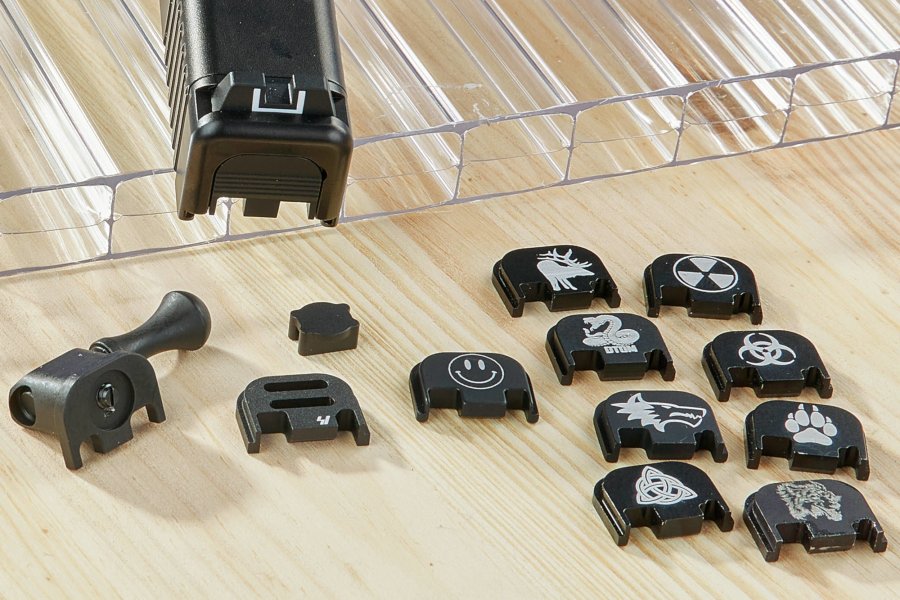
In conclusion: GLOCK tuning is worthwhile
Due to the rather simple and sometimes easily accessible design of the GLOCK pistols and the extremely huge range of aftermarket parts, a great deal can be personalized on a GLOCK. Replacing the sights is particularly easy, comparatively inexpensive and useful for the respective sporting discipline. A trigger overhaul is also high on the tuning list for many GLOCK shooters. Even the use of well-known aftermarket springs can improve the characteristics noticeably and the trigger weight somewhat. To push the trigger weight down even further, you would inevitably have to dig deeper into your pocket and go for the more expensive high-end parts. The other add-on components, such as frame weights, jet funnels, and all sorts of controls, help tailor the GLOCK to your own ergonomic needs and drill patterns, and depending on the build and weight, they can help the gun feel noticeably more snug in the shooter's hand. Finally, it should be mentioned that those who are now seized here by the conversion and upgrading love, should inform themselves beforehand about what is allowed on their gun and what is not. This concerns on the one hand their respective sporting discipline, on the other hand the local gun laws.
all4shooters.com regularly reports on new products from GLOCK. Most recently, for example, about the limited edition GLOCK 17 Gen5 FR PANG.
You may also be interested in Part 1 of this article about tuning your GLOCK pistol.



